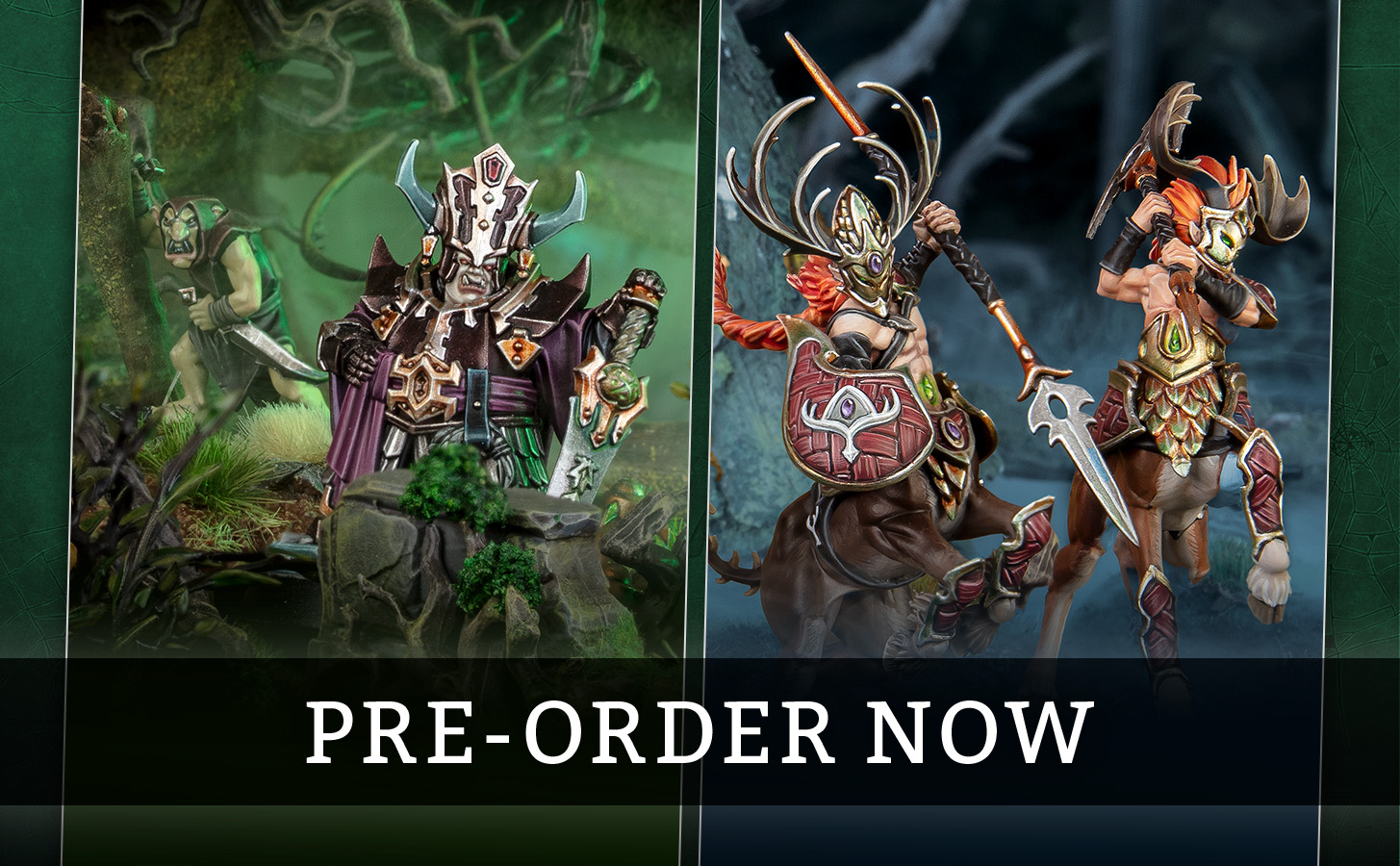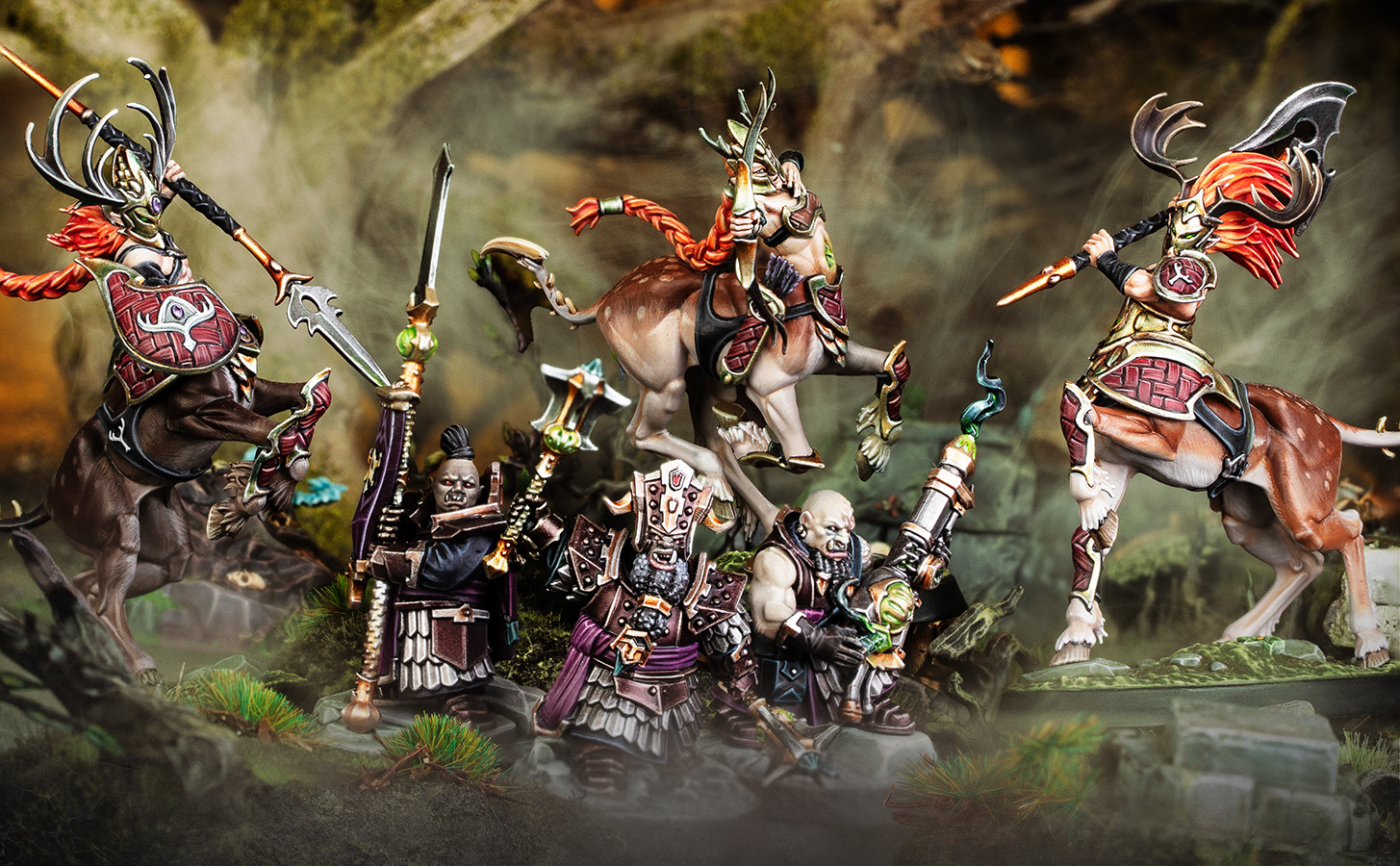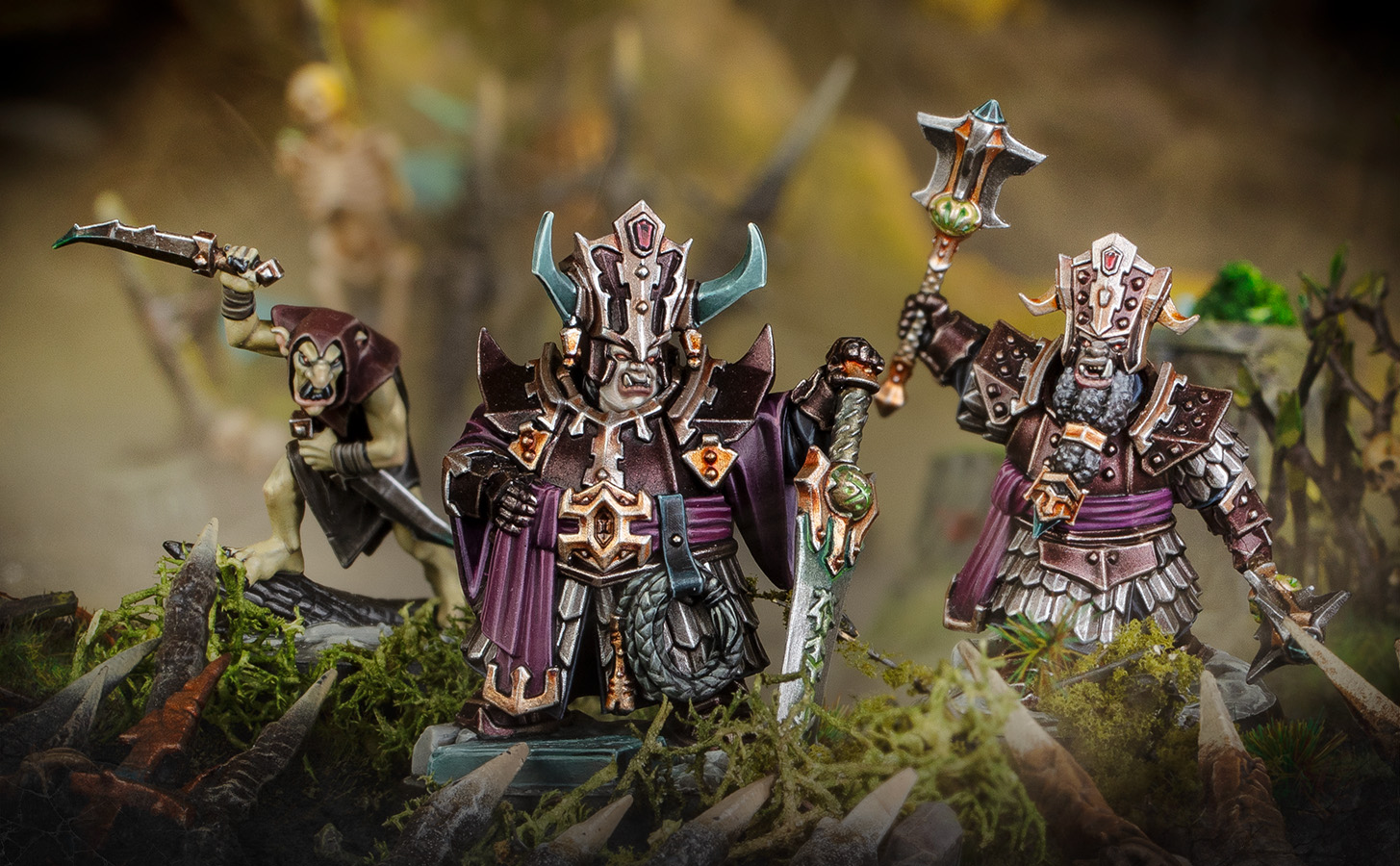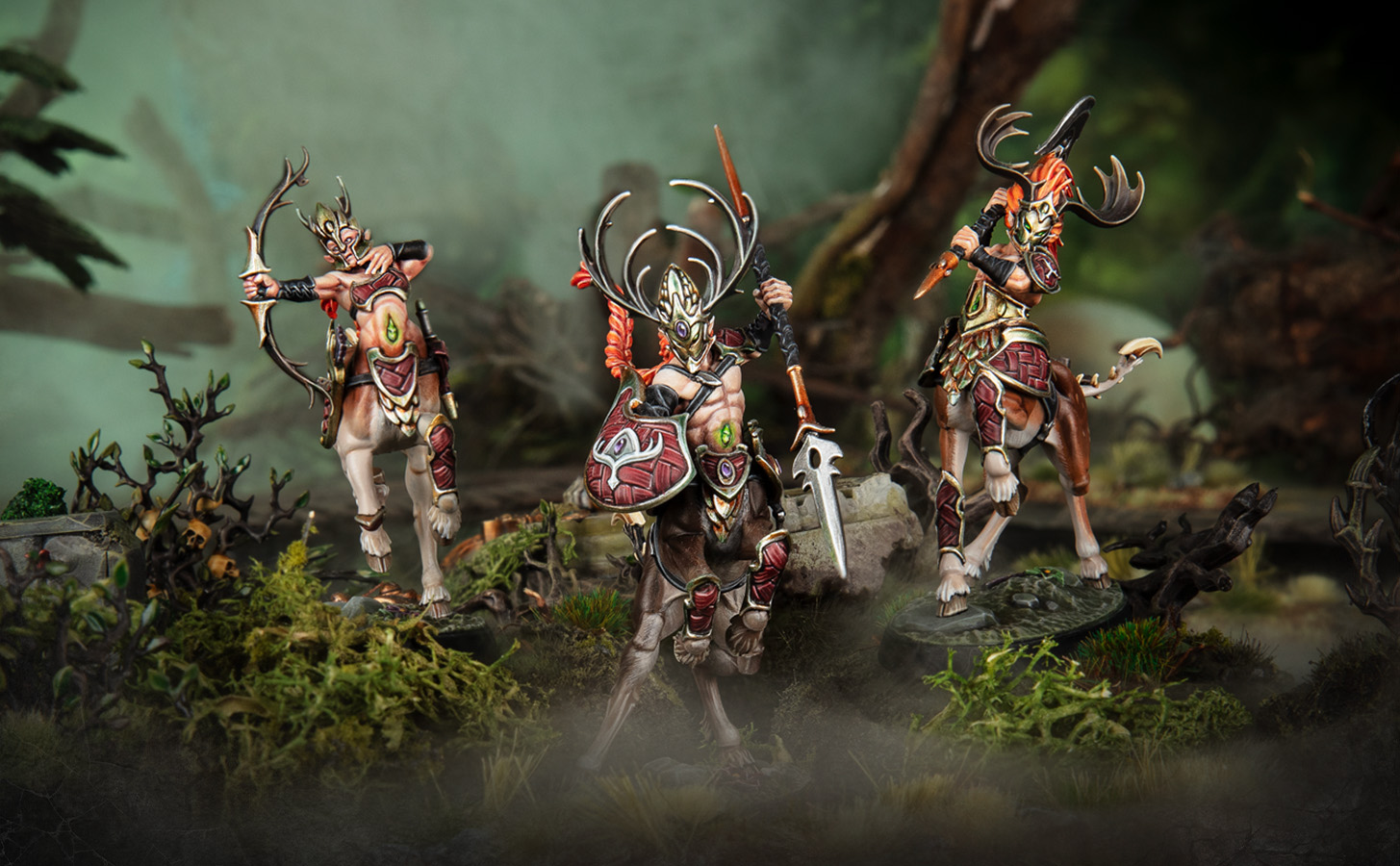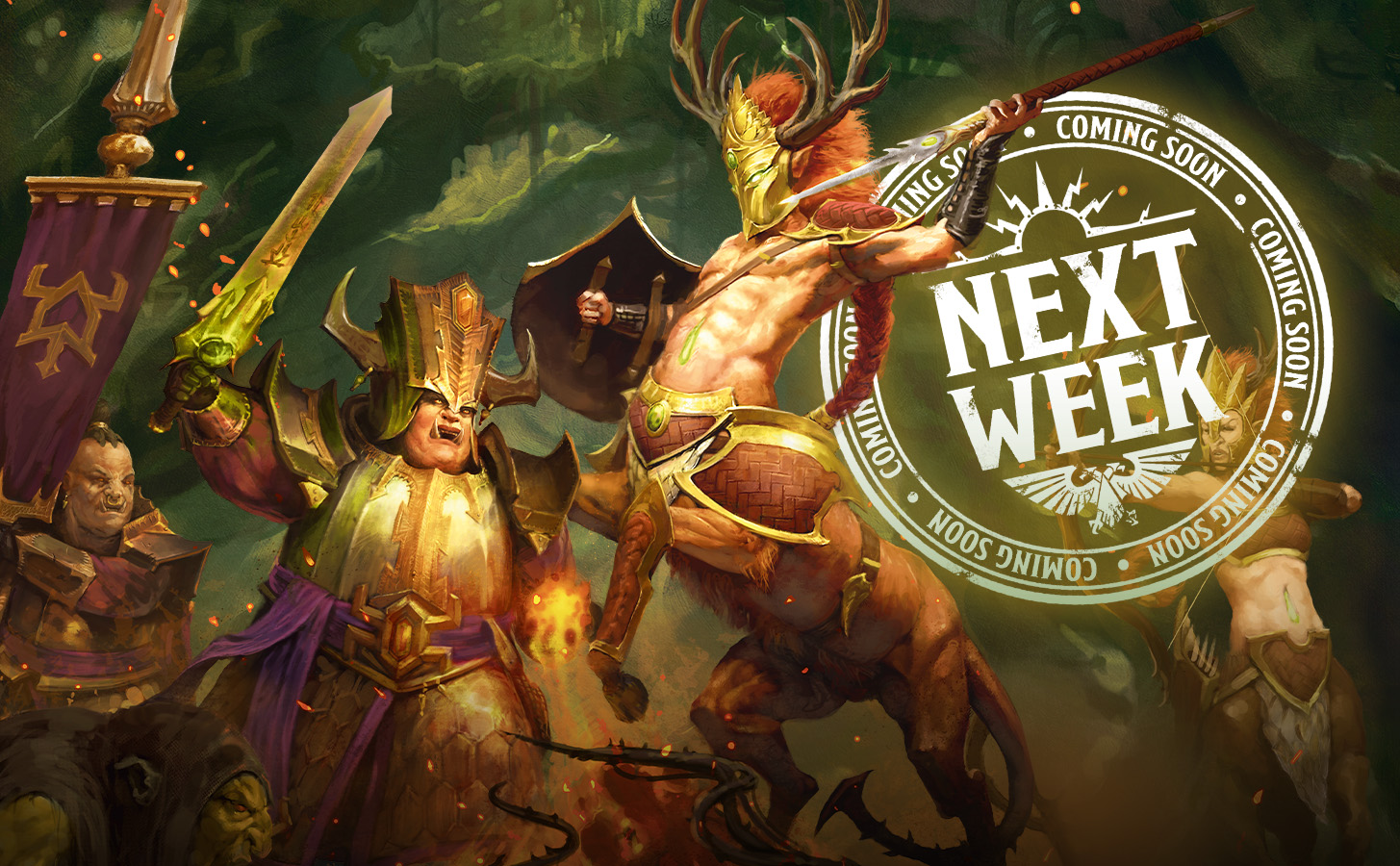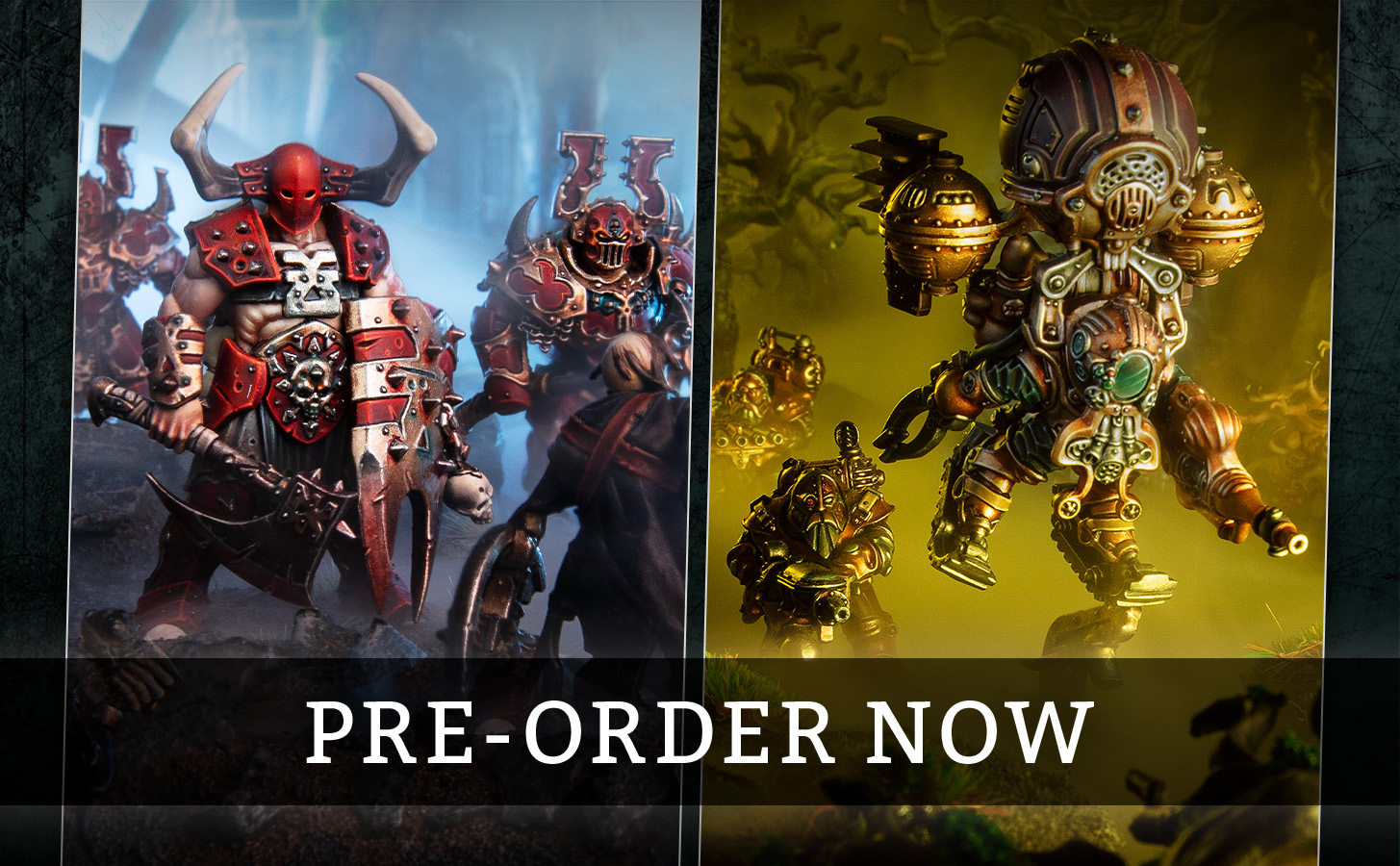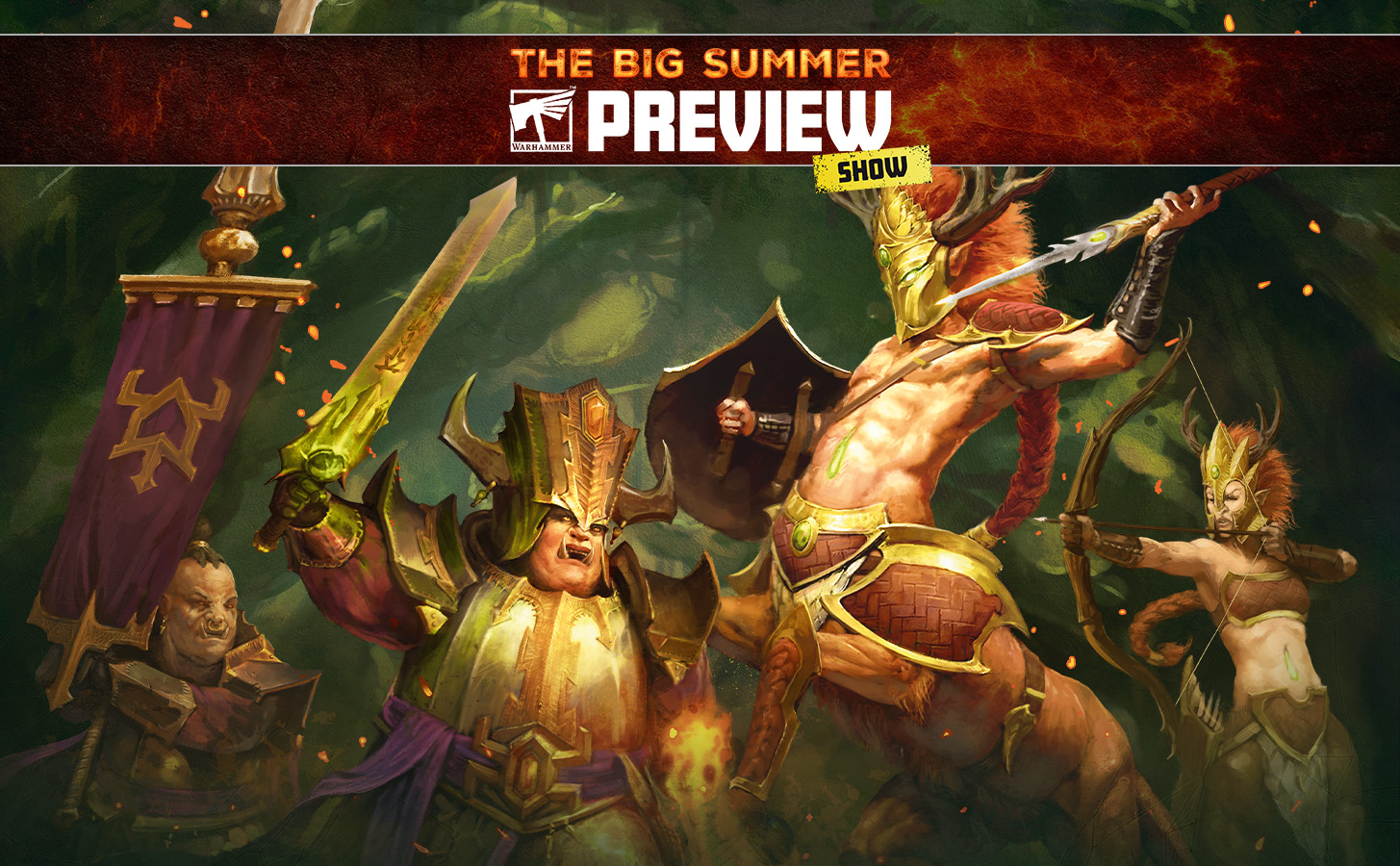Gaming Presenters Nick and Josh from the WarhammerTV team have been playing an awful lot of the new edition of Warhammer Underworlds recently, and the prospect of building their own decks has got them all excited. We asked them to go into more detail…
Josh: It’s time to talk about the Nemesis format for Warhammer Underworlds, where the true deck-building aspect of the game comes in, adding loads more depth to your experience. Let’s take a look at the rules.

Nemesis Deck-building
Pick 2 different Rivals decks. Only one Rivals deck with a Plot card can be picked to be one of your chosen decks.
Pick 12 or more Objective cards from your chosen Rivals decks. You can pick a maximum of 6 Surge Objectives. This is your Nemesis Objective deck.
Pick 20 or more Power cards from your chosen Rivals decks. Up to half of these cards can be Ploys. This is your Nemesis Power deck.
Each card in each deck must have a unique name; duplicate cards are not allowed.
Nick: Nemesis is super simple in the new edition. Pick any two universal Rivals decks. These can be any of those from the Embergard box, or any which come out in the future. You can 100% mix the styles of play – so if you want to pick a Strike deck and a Take and Hold deck, you can. The only restriction is this: you can only choose one deck with a Plot card – that’s a little card that details some special rules like the Cataclysm Tracker in the Countdown to Cataclysm deck.
Objective cards
Josh: Then it’s time to start deck-building! Pick 12 or more Objective cards from your two chosen decks. The only restriction here is that you can only have six Surge objectives (the ones marked with the little lightning symbol) in total.
Nick: The objectives you pick here will, crucially, define exactly what you’re trying to do in the game to score those big Glory points. Try and find that clever mix of cards and have a solid plan in mind to make sure every objective card you select works well with that plan.
Josh: What is interesting here is that you can pick more than 12 Objective cards if you like. You could, in theory, have up to 18 if you include six Surge objectives. But remember, the more cards you put in your Objective deck, the longer it will take to draw into the ones you really need, so our advice is to be as lean as possible here!
Power cards
Nick: You can choose at least 20 Power cards from your two decks, but only half of them can be Ploys. Now you know what your Objective cards are, you can really tailor your Power deck to ensure you complete those.
Josh: Every time you pick a Ploy or Upgrade, ask yourself whether this pick is driving you towards your Objectives. If not, do you really need it? Remember, you’re more likely to use more Upgrades in this new edition as they are discarded when the fighter they are attached to is slain – and the Glory points you paid for them with can be reallocated.
Last but not least
Josh: Of course, the last thing you ought to do is to give your deck a name! Something fun and Warhammer-themed based on what it’s trying to do…
So, with that all in mind, let’s have a look at a couple of example Nemesis decks that Nick and I have built using the contents of the Embergard box.

Blood & Plunder
By Nick
Warband: The Emberwatch
Rivals Decks: Blazing Assault, Pillage and Plunder
Strategy: Strike hard, strike often
Objectives
Get Stuck In (1), Perfect Strike (1), Critical Effort (1), Strong Start (1), Hostile Takeover (1), Aggressive Claimant (1), Keep Choppin’ (1), Fields of Blood (1), Go All Out (1), Denial (1), Annihilation (5), Lost In The Depths (1)
Power Cards
Lure of Battle, Twist the Knife, Sidestep, Wings of War, Determined Effort, Commanding Stride, Prideful Duellist, Explosive Charges, Brash Scout, Trapped Cache.
Great Strength, Keen Eye, Accurate, Duellist, Deadly Aim, Sharpened Points, Great Fortitude, Gloryseeker, Great Speed, Swift Step.
Glory points available: 16
There’s no mucking about here; this deck is all about running at your enemy and killing them. The Emberwatch inspire when they use a core ability in enemy territory, so deploy your models as far forward as possible and charge into enemy territory straight away. Use Vanguard Dash (from The Emberwatch’s Warscroll) to move a model into enemy territory early doors, and you might be able to have two fighters inspired by the end of Battle Round 1.
While most Objective cards score low Glory, all of them reward you for swinging at the enemy and causing damage, so if you keep that in mind at all times, you’ll score most of your Objective deck.
Your ploys and Upgrades are singularly focused on getting your fighters towards the enemy and making sure you strike well. While cards like Determined Effort and Twist the Knife are there to ensure your attacks hit home and hit hard, don’t leave home without the movement tricks to get your fighters around the board – because if you’re not in range to hit your opponent, you’ll find killing them very hard!
CLUTCH CARDS:

Get Stuck In
Objective (Surge) - 1 Glory
Score this immediately after a friendly fighter’s Attack if the target was in enemy territory.
Aqshy is no realm for those unwilling to take the fight to the foe.

Accurate
Upgrade (1)
Strike True (Surge): After you make an Attack roll for this fighter, you can immediately re-roll 1 Attack dice in that Attack roll.
In the smoky depths of Embergard, meeting a target with blade or arrow is in itself proof of prowess.

Lure of Battle
Ploy
Pick 1 friendly fighter that is within 2 hexes of another fighter. Push the other fighter 1 hex closer to that friendly fighter.
Few forces are as compelling as the force of sheer personality.
Get Stuck In: Score an easy Glory point just for making an attack, whether successful or not!
Accurate: Make your attacks hit home and score that big Glory.
Sidestep, Lure of Battle & Explosive Charges: These ploys either push your fighters, pull in enemy fighters or make your charges longer, all of which make hitting them a lot easier!

The Treasure Was All Mine
By Josh
Warband: Zikkit’s Tunnelpack
Rivals Decks: Emberstone Sentinels, Pillage and Plunder
Strategy: Thrive and stay alive
Objectives
Aggressive Claimant (1), Strip the Realm (3), Lost in the Depths (1), Step by Step (1), Aggressive Defender (1), Unassailable (1), Hold Treasure Token 1 or 2 (1), Hold Treasure Token 3 or 4 (1), Hold Treasure Token 5 (1), Slow Advance (2), Iron Grasp (2), Supremacy (3).
Power Cards
Explosive Charges, Commanding Stride, Wary Delver, By the Numbers, Healing Potion, Hidden Paths, Hold the Line, Settle In, Sidestep, Switch Things Up.
Canny Sapper, Great Speed, Impossibly Quick, Swift Step, Duellist, Sharp Reflexes, Brute Momentum, Inviolate, Agile, Great Fortitude.
Glory points available: 19
This deck plays to the strength of the Skaven Warband, which is strength in numbers. With five fighters, you’ll be able to be in more places than your opponent. Why not leverage this manoeuvrability with some treasure token control? This deck relies on the core concepts of Emberstone Sentinels, namely claiming treasure tokens and becoming difficult to kill through your upgrades. I’ve splashed this with some of the key cards from Pillage and Plunder, ensuring you have plenty more movement and survivability to claim those difficult to reach Treasure Tokens in your opponent’s territory. Let your opponent be the aggressor as you run circles around them!
CLUTCH CARDS:

Explosive Charges
Ploy
Domain: Friendly fighters have +1 Move while using Charge abilities. This effect persists until the end of the battle round or until another Domain card is played.
Blasting charges litter the depths of Embergard and make for a ferocious prelude to any assault.

By the Numbers
Ploy
Draw a number of Power cards equal to the number of treasure tokens held by your warband.
Conquest is an insatiable beast – the further its grasp extends, the more it covets.

Switch Things Up
Ploy
Pick 2 treasure tokens. Swap the positions of those treasure tokens.
‘A little more for me, an’ a little less for dem. Sounds fair, wouldn’t ya say?’ – Zarbag
Explosive Charges: Domain cards stick around, and this one gives your warband a massive threat range.
By the Numbers: At its worst, this replaces itself, and at its best, you could draw up to five cards to bury your foe in card advantage!
Switch Things Up: Three of the objectives in this deck require you to hold specific treasure tokens, this keeps the odds of controlling the correct one squarely in your favour.
The Nemesis format and the deck-building opportunities are a fantastic way to enjoy Warhammer Underworlds, and of course, as more and more Rivals decks get released over time, the combinations on offer to players will increase.
Thanks guys! Watch Josh and Nick go head to head in Warhammer Underworlds: Embergard First Play, now available to watch on the Warhammer YouTube Channel








